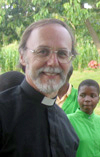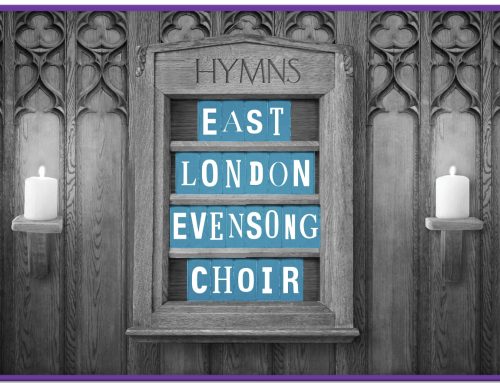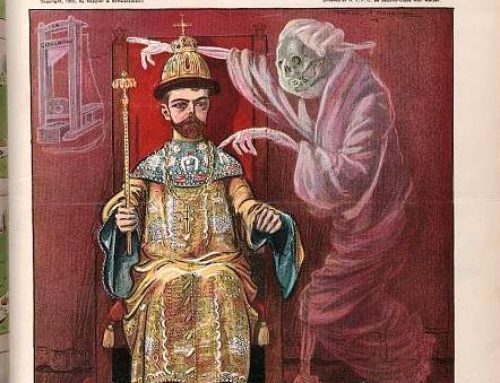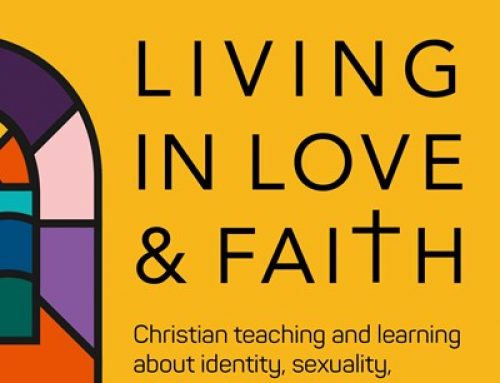A Quantitive Study of Lay Ecclesiology: An analysis of research across five Anglican Provinces.
The Rev’d Dr. Nicholas P. Henderson, April 2010
 Nicholas Henderson is currently Vicar of two West London parishes. A Vice- President and former General Secretary of the Modern Churchpeople’s Union (now Modern Church) he was also Bishop-elect of the Anglican Diocese of Lake Malawi, Central Africa, 2005-2009.
Nicholas Henderson is currently Vicar of two West London parishes. A Vice- President and former General Secretary of the Modern Churchpeople’s Union (now Modern Church) he was also Bishop-elect of the Anglican Diocese of Lake Malawi, Central Africa, 2005-2009.
Abstract: Using research conducted across five Anglican Provinces this paper examines the strength of lay attachment to being ‘Anglican’ and how that is related to current controversies over women’s ministry and homosexuality.
A strong affirmation of Anglican denominational identity emerges, (Brazil 65%, England 70%, Japan 64%, Uganda 79% and the United States 81%). It is clear that laypeople value the shared history and ethos that characterises the Anglican Communion. A majority of lay people ‘approve’ or ‘strongly approve’ of the ordination of women as priests, generally by a substantial margin, (Brazil 85%, England 82%, Japan 69%, Uganda 54%, the United States 94%).
Consensus breaks down on the issue of ordaining homosexuals (whether celibate or practising) to the priesthood. Only in the USA is there a clear majority in favour and even here by just 51%. In Uganda 70% ‘strongly disapprove’. Other countries are less hostile, but in every country surveyed it is clear that there is still some way to go before a majority of the laity might be willing to accept clergy homosexual relationships.
However, in none of the countries surveyed does the laity see this single issue as justifying schism. There is broad acceptance of the desirability of continuing within existing Anglican structures and ‘seeking consensus through dialogue’ is the overwhelmingly preferred way of resolution.
Quantitive Study of Lay Anglican Ecclesiology: New research across five provinces indicates more agreement than division and little appetite for schism.
Nicholas P. Henderson
History records faithful priests and bishops as formative in the development of the Anglican Communion. Nevertheless, it is difficult to understand what might be a lay understanding of the Anglicanism as frequently the role of the laity has been subservient to those who have led them. There have been some powerful exceptions to this including those laity,1 mostly from the aristocracy or landed gentry, who controlled advowsons and presentments. These have also included the lay monarchs of the past and various lay theologians. Additionally, in the twentieth century there has been a growth of democratisation in the Anglican Communion as various items of reforming ecclesiastical legislation have encouraged the role of the laity to increase, not least with universal Anglican moves towards synodical government. Further an interest in lay theology and training is a phenomenon that has seen a patchy twentieth and twenty-first century development of educational institutions for the involvement of lay people within the Church’s mission and ministry.
Nevertheless, it is hard to assess exactly what lay opinion has been and what it currently might be particularly in a time of profound ecclesiastical unrest and change in the Anglican Communion. There are some significant recent exceptions to this, not least on the burgeoning Internet as a tool of communication. Here, untrammelled by academic rigour, or anything other than very selective critical analysis, views are expressed, sometimes of an extreme kind, by what is an unmonitored and self-selected pool of semi-anonymous contributors. However, these are mostly, although not exclusively, from the affluent West.
Despite this forum, there has remained an untapped and largely unresearched area of lay opinion nestling within far-flung cultures, some of which are too poor to have good Internet access. This situation is compounded by the fact that different countries and their church communities are inevitably at different stages of development. It is possible then to know the opinions of priests and episcopal leaders even from the distant corners of the Communion but the views of the laity remain something of an enigma.
To address this paucity of knowledge a field study was undertaken in 2006 and 2007 in five provinces of the Anglican Communion, Brazil, England (Province of Canterbury) Japan, Uganda and the United States. The study was extensive, conducted at a diocesan and in England deanery level and undertaken by means of a wide-ranging questionnaire. This was in four languages and two scripts, with the aim better to understand:
i. Lay perceptions of Anglican identity
ii. Lay perceptions in the context of the local, national and international Church
iii. Lay perceptions of ecclesiastical authority
iv. Lay views on contemporary issues
v. Lay understanding of relationships and ecclesiology within the Anglican Communion
The choice of countries was not arbitrary as a sample was sought across a breath of geographical and theological areas currently representative of divergent positions of opinion in the Anglican Communion – at least as expressed by episcopal leadership.
Thus Anglicanism in Brazil is broadly liberal catholic in tone, the English survey covered a typically diverse and large deanery, Japanese Anglicans represent a tiny group in a largely non-Christian environment, and Uganda is conservative evangelical and latterly GAFCON orientated. In the United States the Diocese of Virginia was surveyed as being one of the most troubled dioceses in the Episcopal Church.
Lay views on contemporary issues.
The questionnaire examined well over two thousand responses. A substantial amount of analysis was undertaken and is unused here but singled out below are some key findings that have a relevance to tensions within the present day Anglican Communion.
For the purpose of this article four areas of interest emerge:
i. How laity perceive themselves as Anglicans
ii. Views on the ministry of women
iii. Views on homosexuality
iv. What might be the preferred lay solution to current difficulties
How do laity perceive themselves as Anglicans?
Of particular interest in this case are two questions. The first of which is where respondents were asked to describe the Anglican Communion being given a variety of options as follows:
- A world-wide fellowship of believers
- A world-wide fellowship of Christian churches in communion with the Archbishop of Canterbury
- A sub-division of the wider universal Church
- Part of a world Reformed Church with bishops
- The international Church to which I belong
- I have never heard of the Anglican Communion
In response laity appear to have grasped something of the technical definition of Anglicanism as ‘being in communion with the Archbishop of Canterbury’2, even when presented with bland and near meaningless, alternative definitions such as ‘the international Church to which I belong’. A definition of the Anglican Communion as ‘believers in communion with the Archbishop of Canterbury’ consequently emerged as the actual majority preferred choice of three of the five countries surveyed (Brazil 40%, England 63%, and the United States 63%). In Uganda (69%) the much looser definition ‘a world-wide fellowship of believers’ exceeded this by less than a full percentage point. In Japan (32%) an understanding of the Anglican Communion as ‘a subdivision of the wider universal Church’ exceeded ‘believers in communion with the Archbishop of Canterbury only by just over one percentage point.
The other definitions received correspondingly fewer returns and for interest, ‘I have never heard of the Anglican Communion’ received a 10% return in Brazil, almost exactly 5% in England, Japan and the United States and a tiny 1.5% in Uganda.
These results seem to underpin an understanding of what it means to be Anglican, at least in a formal sense, as a denominational experience that has a focus on an office held by an individual in a particular place.
The results are tempered however by an overall paucity of knowledge of the name of the current archiepiscopal office holder in Canterbury. This was asked in each country as a specific question and variations on ‘Williams’, ‘Rowan’, or ‘Rowan Williams’ were all accepted as being correct answers. Almost half of respondents in Brazil successfully gave the name, which was quite impressive for a non-English speaking country. Somewhat more unexpected was the correct naming by only about a third of respondents in the United States. The under ten percent in Uganda caused much consternation on the part of the Bishop of Namirembe who felt the figure should have been higher but perhaps the tiny figure (less than two percent) in Japan will have been changed by Rowan Williams recent visit there? Nevertheless, most surprisingly, in England one in three regular churchgoers were unable to name the current Archbishop of Canterbury!
However, as Paul Avis points out, perhaps fortunately for the Archbishop, ‘catholicity is not a quantitative concept’.3
Christian identity is dependent on cultural norms. It settles into the shape determined by the available ideological receptacles. Christian identity is moulded not by pure theology, for there is no such thing, but by the assumptions, needs and demands of time and circumstance.4
Nevertheless, across geographical location and culture, arguably a commonality of understanding emerges of Anglicanism with its source in a common origin and history centred on Canterbury. This appears to remain intact as both a concept and a sense of identity despite a comparative dearth of knowledge as to who currently occupies the historic see.
Secondly, a question was asked ‘How Anglican (and in the United States) Episcopalian do you feel?’ This question was asked in what is called Likert5 formulation with categories offered as ‘not at all’, ‘not very much’, ‘uncertain’, ‘quite a lot’, and ‘strongly’.
Adding ‘quite a lot’ and ‘strongly’ together produced results showing a strong affirmation of Anglican denominational identity, (Brazil 65%, England 70%, Japan 64%, Uganda 79% and the United States 81%). These results are qualified by two caveats. First, there are some problems in the Luganda (Ugandan) translation where it is difficult to distinguish between being Anglican and being Christian, which correct meaning has to be determined by the context. Secondly, it can be noted that ‘Anglican’ nomenclature is both claimed and sought by those who are currently in the van of separating from the Episcopal Church in the United States. The term Anglican is seldom used in the United States and the author chose not to use it in this context lest it acquire the meaning of ‘how disaffected with the Episcopal Church do you feel?’. Thus the question as presented in the United States was phrased ‘How Episcopalian do you feel?’.
Views on the ministry of women.
Respondents were asked their views on women both as priests and as bishops with questions again presented in Likert formulation. Across all of the five countries a majority of lay people ‘approved’ or ‘strongly approved’ of the ordination of women as priests, generally by a substantial margin. For women priests ‘strongly approve’ and ‘approve’ added together show (Brazil 85%, England 82%, Japan 69%, Uganda 54%, the United States 94%). A caveat should be added in that Uganda with the lowest approval rate also recorded a significant minority dissent (‘disapprove’ + ‘strongly disapprove’ 32%) and Japan had an ‘uncertain’ level of 16%.
In the case of this question some subsidiary analysis was carried out to determine if attitudes to the ordination of women as priests are affected by the gender of the respondent. Gender approval rates vary from country to country but of note are England where female respondents are more approving than male and Japan where the reverse is true. Ugandan males have the highest disapproval rate but also a higher rate of approval than females suggesting a more polarised situation. Male approval is slightly higher in the United States than female. These results are somewhat unexpected as overall women might have been more approving of women as priests by virtue of gender solidarity. The results for women bishops correspondingly hardly varied from those of priests.
Views on homosexuality
The broad consensus regarding the ordination of women, which could be considered to be the outworking of a process of reception, was lost over the issue of homosexuality. The questionnaire distinguished between the ordination of homosexuals in faithful partnerships and those who are celibate homosexuals. The questions were again in Likert formulation ‘strongly disapprove’, disapprove’, ‘uncertain’, ‘approve’, and ‘strongly approve’.
The most sympathetic response occurs in the United States with a majority strongly approving or approving both the ordination of homosexuals in faithful relationships and the ordination of celibate homosexuals. Those who ‘strongly approve’ increases marginally in the United States from 25% for homosexuals in faithful relationships to 26% for homosexuals in celibate relationships but more markedly so in the less strong ‘approve’ section from 25% to 33% in each case there is a significant uncertain category of 21% and 18% respectively.
In the other countries ‘uncertain’ or ‘disapprove’ returned majority responses with Uganda producing very high 70% and 67% ‘strongly disapprove’ for faithful and celibate relationships respectively. The only other exception is England where the distinction of celibate homosexual ordination produces a more positive, but not majority, response.
There is a uniform tendency for Ugandan responses to be the most conservative regarding sexuality but even in the United States there is a significant minority (25%) who are against the ordination of homosexuals in faithful relationships with 21% ‘uncertain’ as opposed to the bare majority of 51% in favour. This shifts noticeably when the question becomes ‘the ordination of celibate homosexuals’ to 59% in favour but still leaves 18% ‘uncertain’ and 19% ‘disapproving’ or ‘strongly disapproving’.
For the sake of simplicity the author has not detailed all the results. However, the overall impression gained is that, apart from in the United States there is still some way to go before a majority of the laity are willing to accept of clergy homosexual relationships. The differences between the United States and the rest of the Communion in this respect are probably reflected in current international tensions.
What might be the preferred lay solution to current difficulties?
Anglican lay people, generally speaking, are not directly subject to ecclesiastical authority in the way understood by Roman Catholics or members of sectarian groups. Correspondingly, an apparent studied detachment from the leadership is observable in all the countries surveyed. This is most noteworthy in Uganda where the laity have a clearly identifiable sense of being Anglican and in communion with Canterbury regardless of the official position or otherwise of their leadership which has in recent times exhibited some hostility towards the concept of a Canterbury primacy.6
A disinclination to schism
At the same time, the data indict that there is an evident marked reluctance to sever relationships over disagreements, even when these differences of opinion involve controversial issues currently causing division in the Communion. This is reinforced by a question where respondents are offered a series of options to deal with disagreements within the Anglican Communion.
- Excommunication
- Providing alternative bishops for different views
- Creating new provinces
- Creating binding agreements
- Doing nothing and living with differences
- Seeking consensus through dialogue
The extreme sanction of excommunication is rejected by a majority of respondents. Only a notable small minority total of 15% in Uganda choose either ‘strongly agree’ or ‘agree’ otherwise a substantial majority in each country either ‘disagree’ or ‘strongly disagree’.
Although alternative episcopal oversight is currently available, as a response to disagreements, in England the detailed suggestions of the Windsor Report are unlikely to have impinged themselves on many other than the most widely informed of the laity. Options for the provision of alternative bishops only achieved a majority in Uganda and then by less than half of respondents. Clearer still alternative provincial provision is nowhere a majority choice. The laity questioned seem to prefer current Anglican structures despite any disagreements. Similarly, a question addresses the option of ‘binding agreements’, which is akin to the idea of the Covenant. This finds majority support (70%) only in Uganda of those who either ‘strongly agree’ or ‘agree’. The next highest figure is in Brazil and reveals that less than 40% are in agreement, albeit with a near 40% ‘unanswered’.7 The other countries all return lower figures. The option of ‘doing nothing and living with the differences’ is most supported by Brazil and the United States but overall attracts little enthusiasm.
However, ‘seeking consensus through dialogue’ is the overwhelmingly preferred option (‘strongly agree’ and ‘agree’, added together) in Brazil (70%), England (76%) and the United States (85%) respectively in favour of dialogue. Unfortunately, due to technical printing difficulties, this option was not surveyed in Uganda and Japan but both produced a number of ‘write in’ suggestions to the same end and there is anecdotal evidence in the author’s personal field research to support the idea that these countries would have produced similar results had they been questioned.
It appears that a majority of respondents from each country surveyed favour a desire to remain together (or no apparent desire to separate) as a Communion in spite of strong polarities of opinion between Uganda and the United States over homosexuality and somewhat milder differences between Brazil, England, and Japan and the United States over the same issue. This is a significant finding tempered by the complexities of the liberal leaning American Episcopal Church, already split internally over sexuality, and other tensions more vaguely described as differences between conservative and liberal theological practice and belief.
The data do not yet indicate a process of reception regarding homosexuality. Nevertheless, respondents from the different countries appear inherently unwilling to divide over a single issue. This could be characteristic (perhaps subliminally) in the mind of laity, of an anticipated Anglican process of conciliarity, as is evident from the data showing a broad agreement with the previously controversial ordination of women. In this context separation is an inappropriate action as a prelude to a resolution of differences.
There may also be a sense of belonging to an Anglican Communion that transcends national boundaries and militates against schismatic tendencies. Evidence for this emerges in question ‘how Anglican/Episcopalian do you feel’ which, as discussed above, shows a significant willingness on the part of respondents to identify themselves as being Anglican and this is an allegiance that may transcend any particular differences. A common identity borne out of a shared history together with conciliar governance and an actual, if imprecisely, understood locus of communion through the episcopal hierarchy in communion with Canterbury appears to be a cohesive factor. Lay people are apparently unwilling to sacrifice such unity over a relatively isolated issue such as homosexuality. This comes close to a description of the evolving Anglican comprehensiveness that has long been described as being typical of classic Anglicanism and which is the historic Anglican ecclesiological legacy of the five countries surveyed.
It is possible therefore from the results of the questionnaire to discern a common lay Anglican identity that deserves to be taken seriously. This is indicative of laity who are apparently satisfied with their Anglican identity and who manifest an affirmative, if not always clear, idea of the significance of being part of a world Communion.
Despite relatively limited opportunity for Anglicans in the countries surveyed to meet with each other it is remarkable that such consistency should be observed. Naturally, isolation may be more a reality in some parts of the Communion than others and in this unsurprisingly, the two most culturally and geographically separated of the countries surveyed (Uganda and the United States) are those with the widest disparity of views. In this respect fieldwork and personal interactions, whilst distributing questionnaires, have not led the author to discern a particular anxiety amongst the laity about the issues that are currently dividing the Communion. There is a partial exception to this in the Diocese of Virginia, which has been one of the dioceses in the American Episcopal Church most affected by the struggles between conservative and liberal factions, where 11% think the Episcopal Church leadership is ‘too liberal’ and 14% think the Episcopal Church should be the opposite, ‘inclusive and not conservative’. Also evident is a small but clearly discernable concern with issues of sexuality in the Ugandan Church 4% saying (in a write-in section) ‘no to homosexuals’.
A picture emerges, of a lay Anglican identity that is both rooted unselfconsciously in an English ecclesiology and that is continuing to develop along common lines and shared understandings as the Church grapples with new understandings of ministry and social change. Despite this there is no evidence from the survey of the laity espousing any significant tendency to diverge from this universal understanding of Anglicanism into nationalistic, cultural or ecclesiastical isolation. This continuing shared identity may be characteristic of the very nature of today’s Anglicanism, as an enduring type of denominational Christianity that is still capable of change. The ecclesiastical and theological raison d’être of Anglicanism may consequently be rather more robust and valued by its adherents ‘in the pews’ than otherwise expected.
Whether such an associated Anglican interdependence can continue to withstand the onslaughts of theological disagreement is, however, not yet clear. Some episcopal leaders in recent times have been in the van of declaring a separatist purity of Anglican theology, mostly couched in terms of a near fundamentalist approach to the Bible. This has precipitated an anguished struggle within the Anglican Communion that has its origin in sociological differences, educational disparities and cultural diversity. In practice, these struggles are evidence of an internal conflict within the American Episcopal Church exported through church leaders to other countries but with very little lay interaction. In short the current conflicts appear to be driven by rivalries amongst the leadership rather than emanating from any notable movement amongst a laity whose attitude towards differences seems altogether more irenic.
A discernable common lay Anglican identity is embedded in what is effectively a spontaneous shared Anglican understanding that has developed conterminously across the countries surveyed. Given the passage of time, the advent of controversy, and geographical isolation this is a remarkable and precious heritage that deserves to be cherished. Untroubled by any distracting hubris associated with the competitive burdens of episcopal oversight it is hardly surprising therefore that the laity surveyed across a broad cross-section of the Anglican Communion seem more positive about their future together than some of their leaders.
Notes:
1 The seventeenth century saw some significant lay voices in England, Lucius Carey, Lord Falkland, Edward Hyde, Earl of Clarendon, Sir Thomas Browne and John Locke being examples. See Paul Avis, Anglicanism and the Christian Church (London: T & T Clark, 2002 [2nd edn]), pp. 85–99. A nineteenth century example, would be W.E. Gladstone, four times British Prime Minister.
2 ‘The Churches of the Anglican Communion are linked by affection and common loyalty. They are in full communion with the See of Canterbury and thus the Archbishop of Canterbury, in his person, is a unique focus of Anglican unity’, http://www.anglicancommunion.org/resources/acis/docs/unity.cfm/ (accessed November 2006).
3 Paul Avis, Anglicanism and the Christian Church (Edinburgh: T & T Clark, 1989), p. 302.
4 Ibid., p. 302. 14
5 The scale is named after Rensis Likert, who published a report describing its use in 1932. The Likert scale comprises a series of statements to which respondents indicate the intensity of their agreement. The responses are then aggregated for each respondent. The author typically used variations on a five-point scale with 1 being assigned to the negative ‘Strongly disapprove’ and 5 to the positive ‘Strongly approve’. See Alan Bryman, Research Methods and Organization Studies (London: Unwin Hyman Contemporary Social Research,1989), p. 37.
6 Archbishop Henry Orombi, ‘Anglican identity is not tied to Canterbury’, quoted in a sermon delivered in the Apostles Anglican Church, Lexington, Kentucky, 25th September 2007.
7 The Province of Brazil has already responded unfavourably to Covenantal drafts. See: Igreja Episcopal Anglicana do Brasil, Statement from the Bishop’s House on the Anglican Covenant, St. Andrews Draft, http://www.anglicancommunion.org/commission/covenant/docs/03_brazil.pdf (April, 2008).





